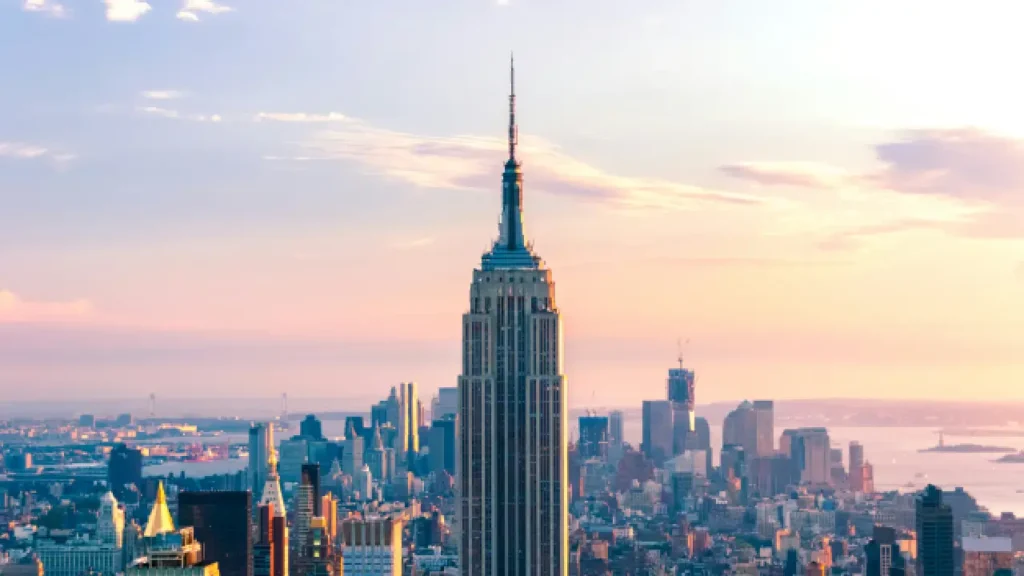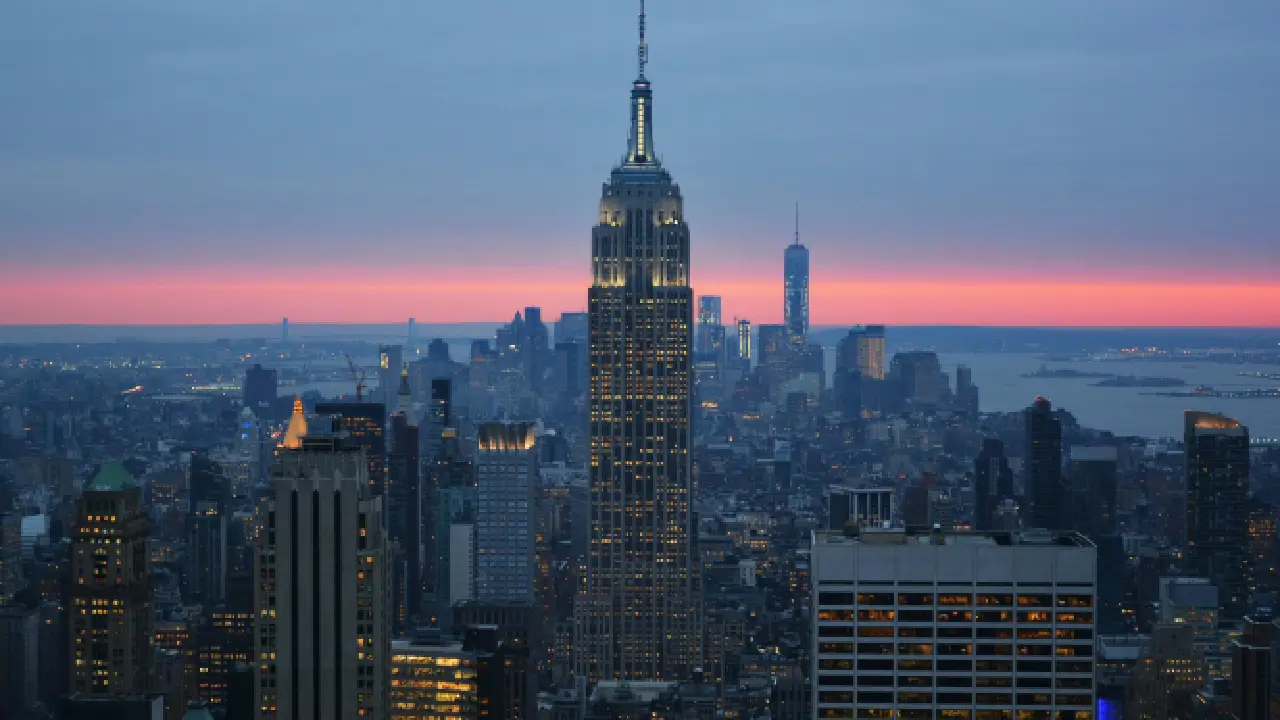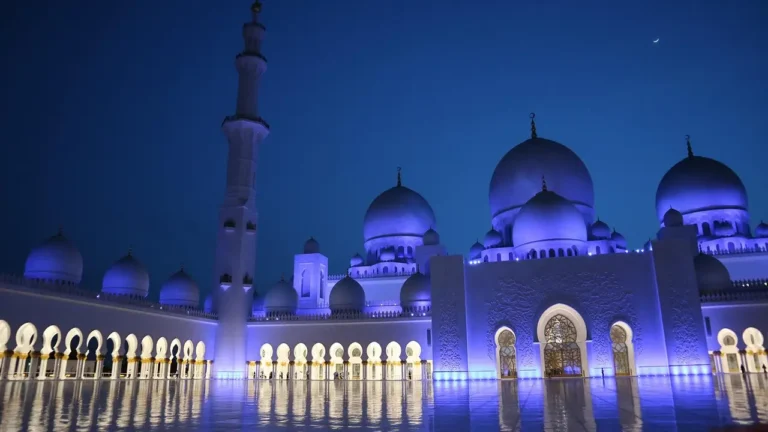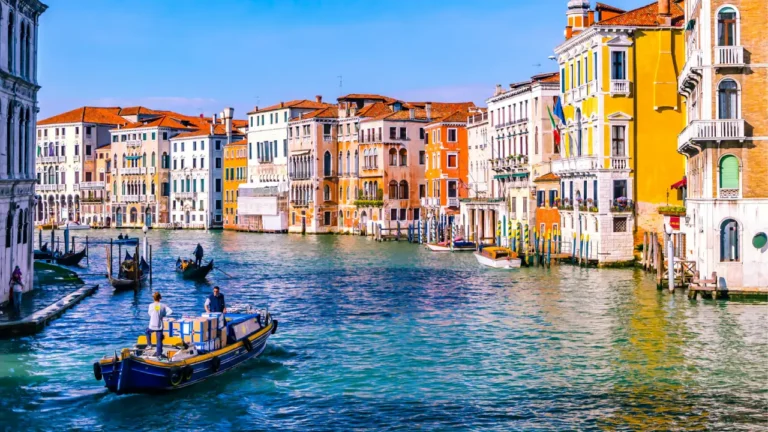The Empire State Building, a towering symbol of American ambition and architectural excellence, has captivated imaginations since its completion in 1931. Standing proudly at 1,454 feet, including its antenna, this Art Deco masterpiece in New York City’s Midtown Manhattan is more than just a skyscraper; it’s an enduring emblem of the city’s resilience and a beacon of hope during challenging times. Here are some fascinating insights into the history, design, and cultural significance of this iconic structure.
A Marvel of Engineering
The Empire State Building was a product of the competitive spirit of the 1920s and 1930s, as developers raced to construct the world’s tallest buildings. Designed by the architectural firm Shreve, Lamb & Harmon, and primarily funded by businessman John J. Raskob, the building was intended to be an impressive feat of both height and speed. Remarkably, construction took only 410 days, involving over 3,400 workers and using innovative techniques that were groundbreaking at the time.
Architectural Brilliance
The Empire State Building’s design is a prime example of the Art Deco style, characterized by its clean lines, geometric shapes, and decorative elements. The building’s façade is made of Indiana limestone and granite, giving it a timeless, elegant appearance. The tower is crowned with an observatory, offering breathtaking 360-degree views of New York City and beyond. The building’s mast was originally intended as a mooring point for airships, although this ambitious idea was never practically implemented.
Cultural Significance
Beyond its architectural achievements, the Empire State Building has become a cultural icon. It has appeared in numerous films, television shows, and books, cementing its status in popular culture. One of the most famous cinematic moments is King Kong’s dramatic climb up the building in the 1933 film, a scene that has been reimagined and referenced countless times in various media.

An Enduring Tourist Attraction
The Empire State Building attracts millions of visitors annually, drawn by its storied history and stunning views. The observatories on the 86th and 102nd floors provide unparalleled vistas of the city skyline, making them must-visit spots for tourists. The building also hosts exhibits that delve into its history, engineering, and impact on popular culture, enhancing the visitor experience with educational insights.
Green Initiatives and Modern Upgrades
In recent years, the Empire State Building has undergone significant renovations to enhance its energy efficiency and sustainability. The building has been retrofitted with energy-efficient windows, improved insulation, and upgraded heating and cooling systems, reducing its environmental impact while preserving its historic integrity. These green initiatives have made it a model for sustainable practices in existing buildings, demonstrating that even iconic structures can adapt to modern environmental standards.
A Beacon of Hope and Resilience
Throughout its history, the Empire State Building has stood as a symbol of hope and resilience for New Yorkers and the world. Its lights have marked significant moments, from patriotic displays of red, white, and blue to honor national holidays, to special color schemes recognizing global events and causes. During challenging times, such as the aftermath of September 11th or the COVID-19 pandemic, the building has served as a visual rallying point, illuminating the night sky with messages of solidarity and strength.
Conclusion
The Empire State Building is much more than an architectural marvel; it’s a testament to human ingenuity, a cultural icon, and a symbol of New York City’s enduring spirit. Its majestic presence continues to inspire awe and admiration, embodying the dreams and aspirations of those who helped build it and those who gaze upon it today. Whether you’re a history buff, an architecture enthusiast, or simply a visitor seeking breathtaking views, the Empire State Building remains an essential stop on any journey through the heart of New York City.




